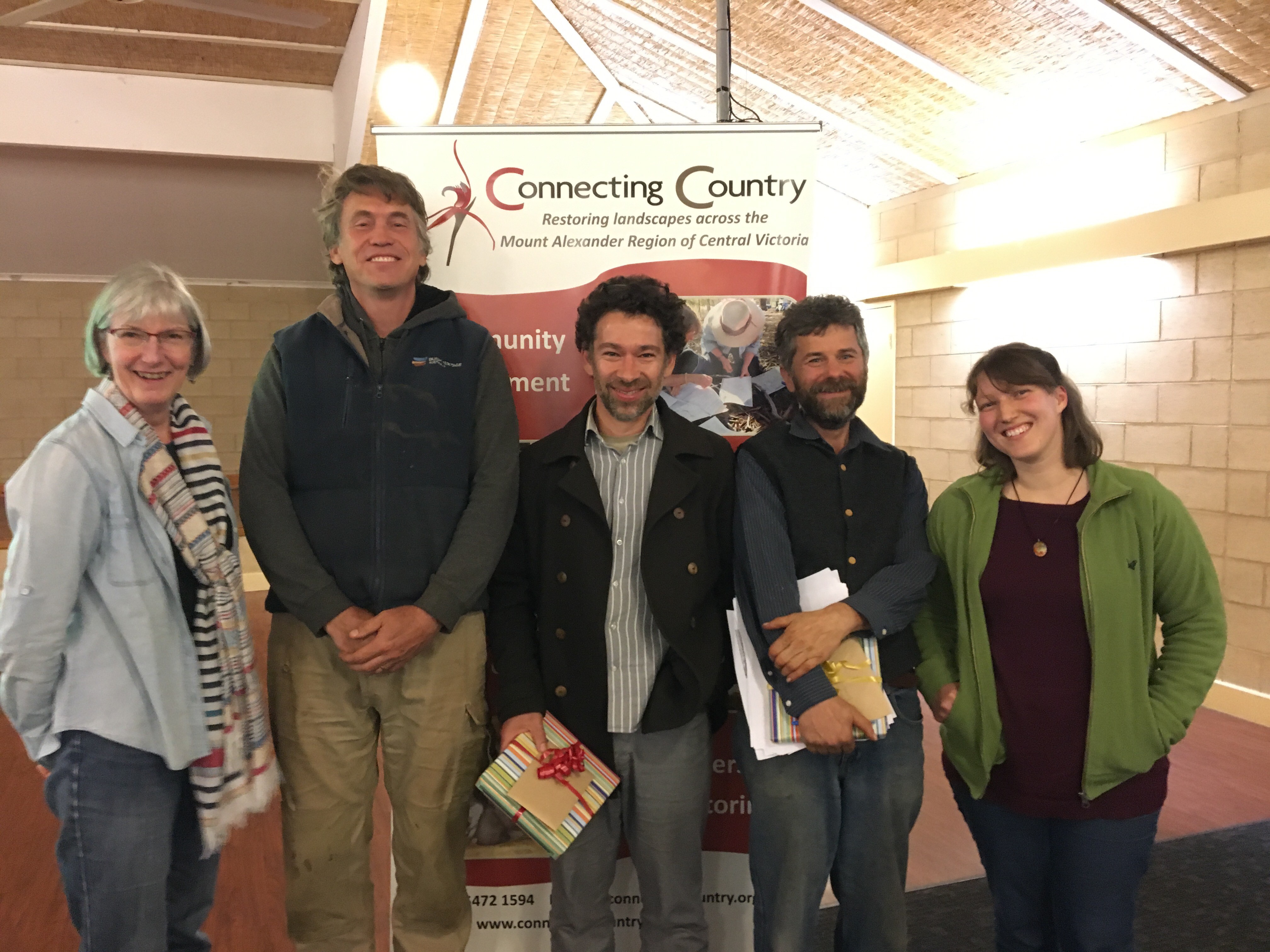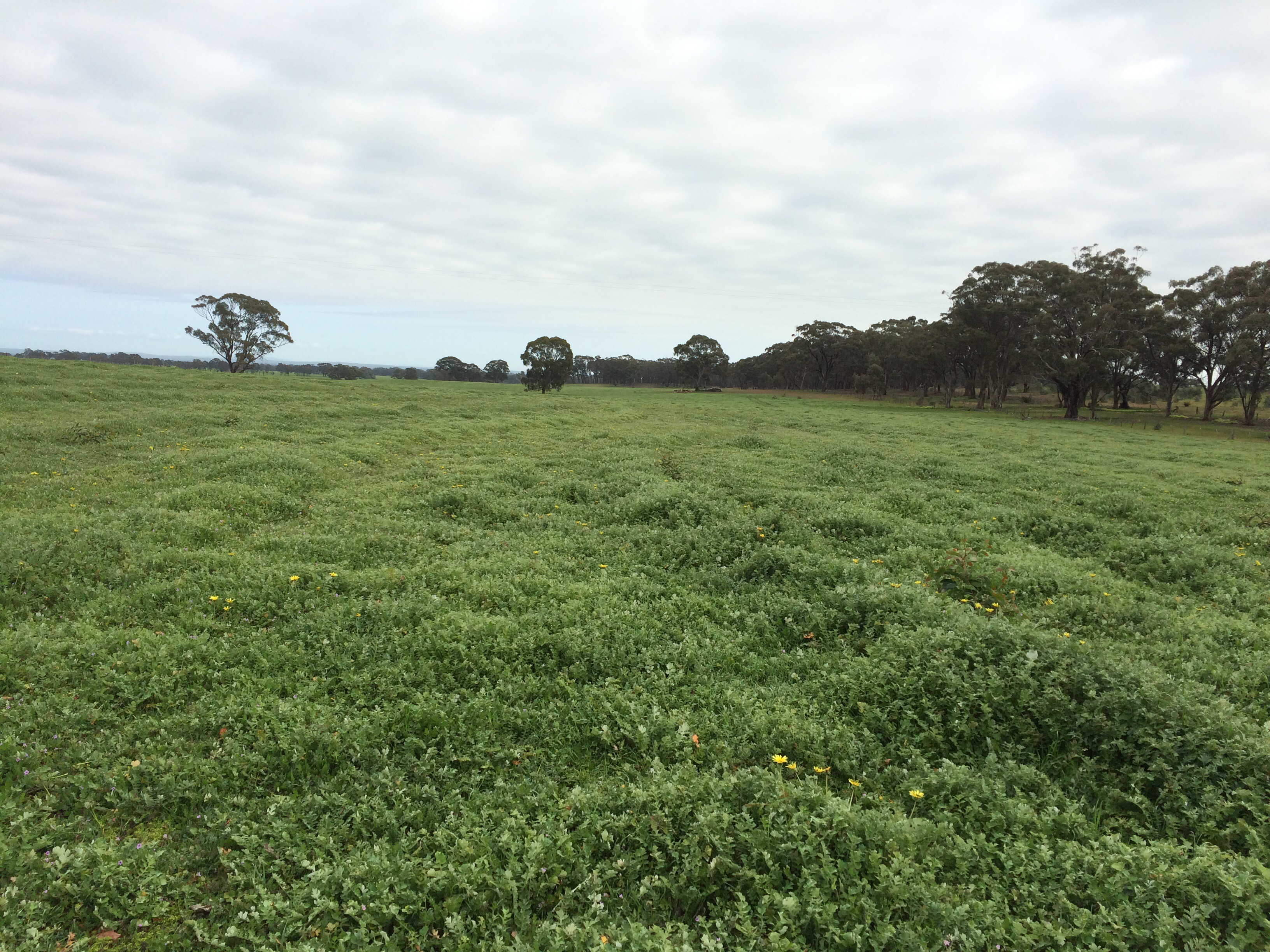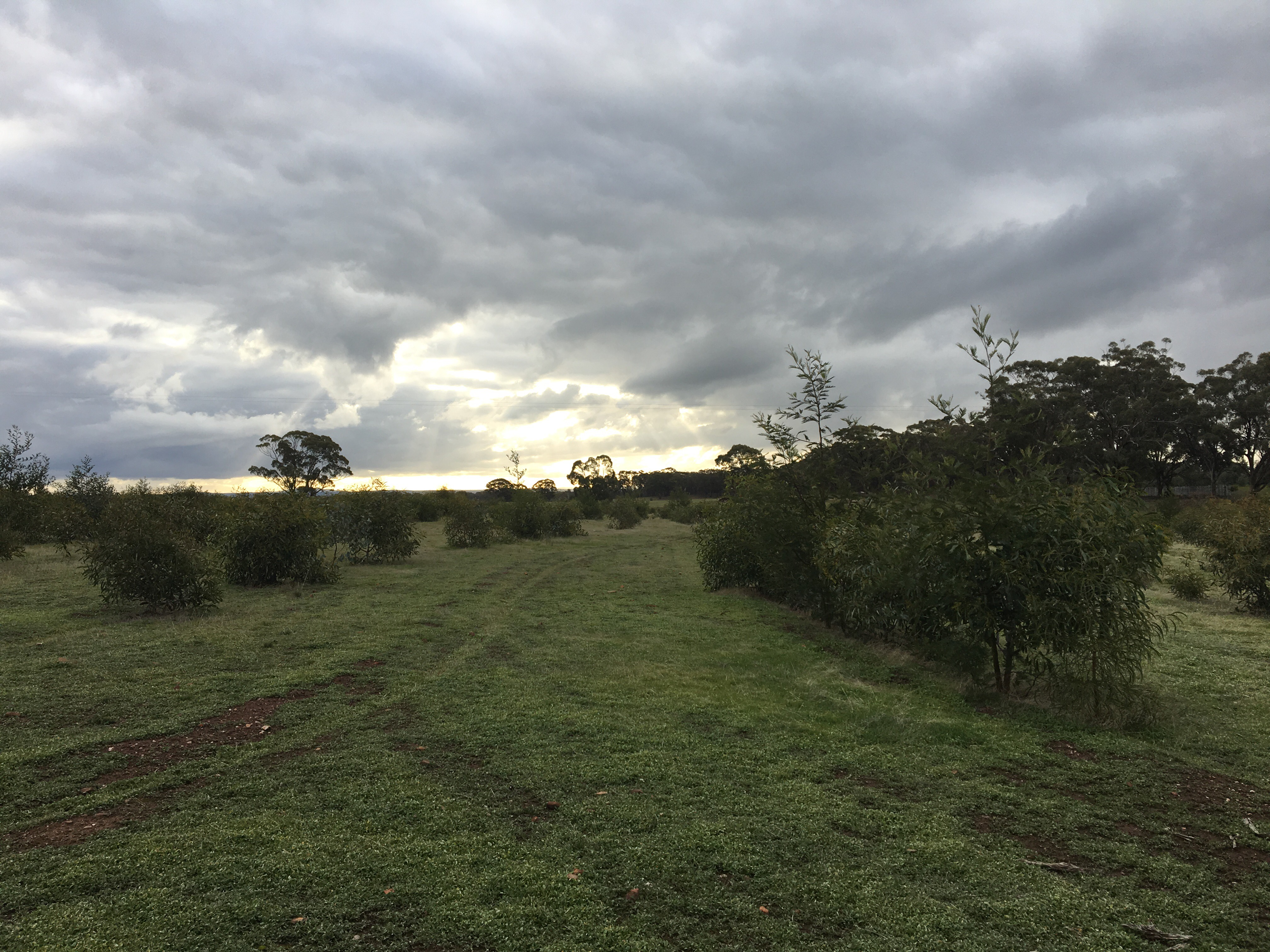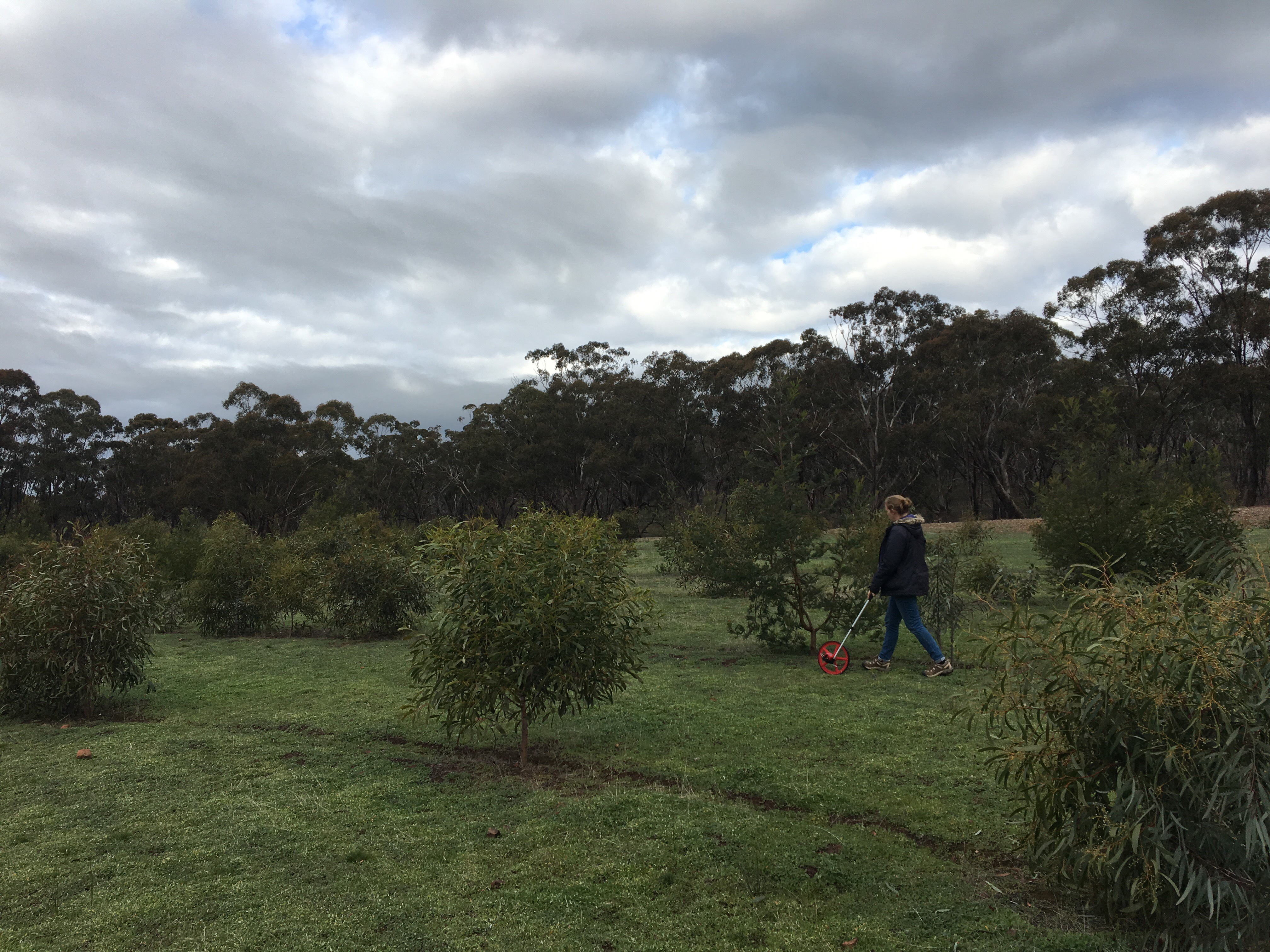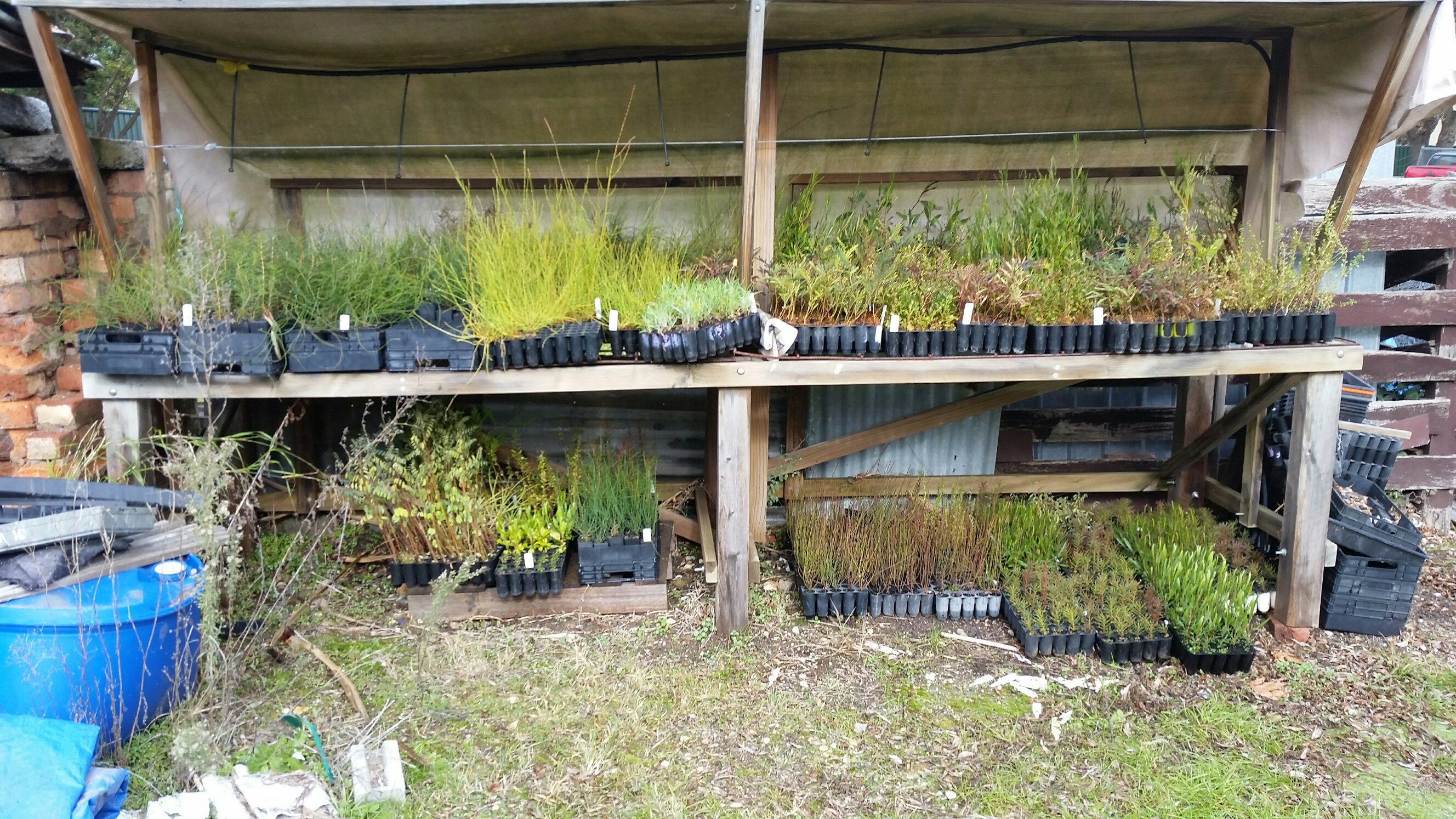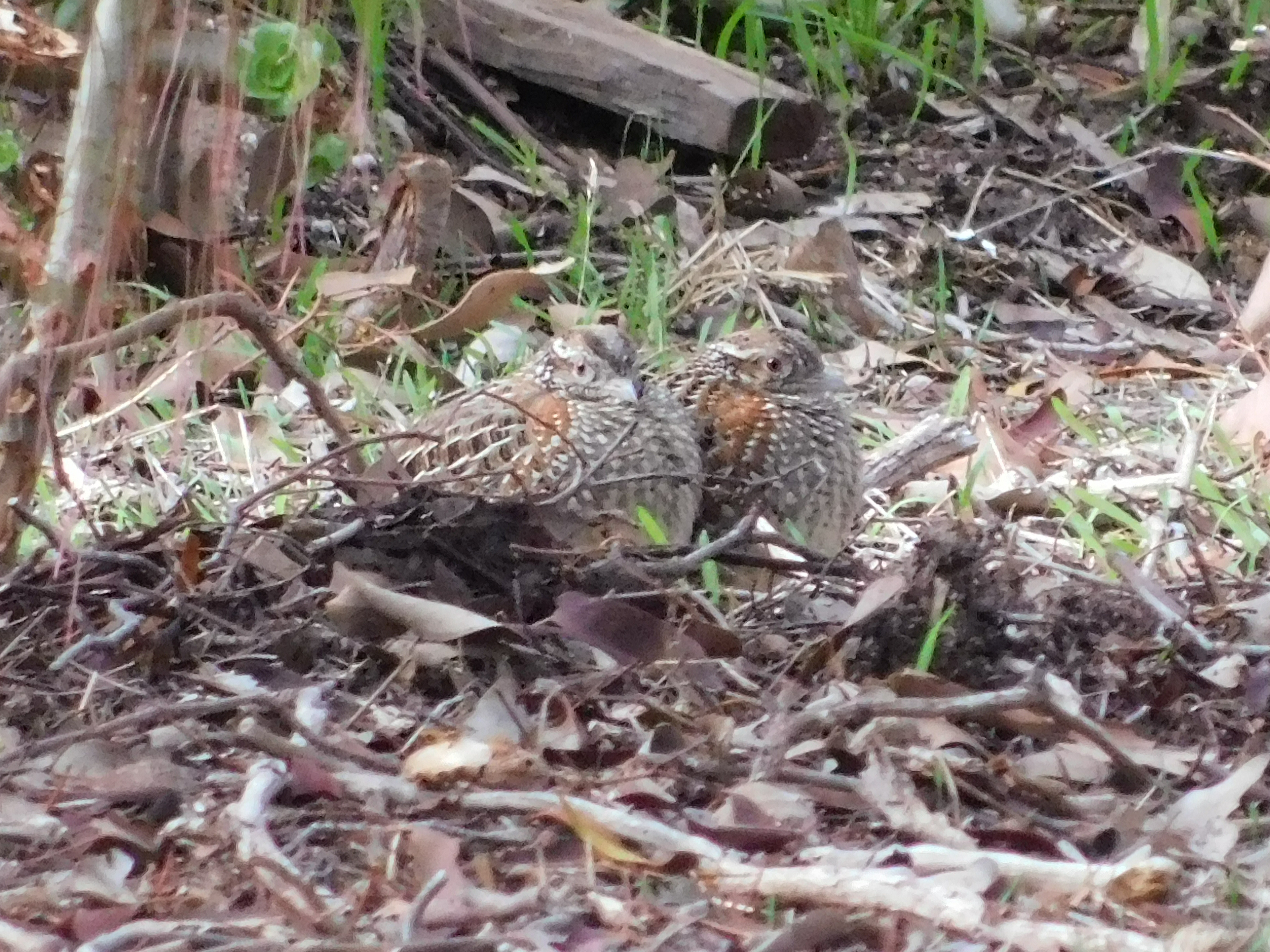Fabulous fauna photos required for FOBIF exhibition
Posted on 13 September, 2018 by Tanya Loos
The theme of the next Friends of Box Ironbark Forests (FOBIF) photo exhibition is Creatures, and they are seeking entries now.
TOGS Cafe in Castlemaine will host the exhibition in November 2018.
So if you have a favourite photo/s of wildlife in our region send them along to FOBIF (info@fobif.org.au). Get cracking and select your fave pics: the closing date for the submission of photos is 1 October 2018.
Bronwyn Silver has kindly supplied some beautiful photos of local fauna for some inspiration.
For more info and the submission guidelines, see the FOBIF website here.
Baringhup Birds on Farms workshop – a great partnership event
Posted on 13 September, 2018 by Tanya Loos
On 9 September 2018 about forty people gathered on a beautiful property in Baringhup to learn about Birds on Farms. The day was a joint workshop by Connecting Country and Baringhup Landcare, and the participants ranged from Connecting Country regular workshop enthusiasts, bird survey volunteers, farmers from in and around the Baringhup area and Landcare members.
Two bird surveys were conducted down on the bird survey area. Curiously each survey recorded 13 birds, though each time the species composition was different! The surveys may be seen here and here. A few new species were recorded on the day – including the Grey Fantail.
Many thanks to Roy and Caroline Lovel for being such wonderful hosts, and all the many helpers on the day, especially Jackie Brown who helped Roy wash up all the bowls and cups!
Attendee Liz Burns wrote this wonderful summary of the day. Thanks Liz!
Birds On Farms workshop
As a long-term attender of Connecting Country’s field days, it was a pleasure to take up Tanya’s request for someone to write up today’s events. In fact, I could write a book with all the detailed notes that I’ve taken over the years.
As usual, this one hit the mark and maintained the usual high standard.
As a full-time biological farmer who relies upon our native birds for pest control and even some pollination services, and a keen lifelong observer of all the complex relationships in nature, this is a subject dear to my heart. It was even more heartening to meet other like-minded farmers with the added bonus of passionate protectors of very old trees.
To read Liz’s detailed notes of the speakers’ presentations click Birds-On-Farms-Field-Day-write-up
After lunch we did separate farm and birds walks: Roy led a group up to the top of the property, and Tanya and Chris conducted a bird survey on a lower restoration area.
I would like to see the Connecting Country model rolled out across the State, as the best value for money blending of agriculture, environment and Indigenous history, especially as 70% of the State is in private hands and the State does not manage Crown Land very well (in my opinion). If farmers could be helped with managing their land, incorporating environmental and cultural values, we could maximise biodiversity and future food production with a three-way partnership with farmers, environmentalists and Traditional owners.
As usual, the catering, the company and weather was of the highest standard.
Grateful thanks must go to Connecting Country and all involved, but in particular Tanya Loos for yet another fascinating and informative day.
Liz Burns, Trewella Farm, Musk
Please scroll through the following gallery of photos from the day.
Biodiversity Response Planning: a new Connecting Country project
Posted on 13 September, 2018 by Tanya Loos
Biodiversity Response Planning projects announced
Over the six months, a diverse array of government, Traditional Owner and community organisations from across Victoria came together to participate in an intense Biodiversity Response Planning process. Connecting Country was one of these organisations!
After a lot of hard work, 89 new projects were just announced by the Hon. Lily D’Ambrosio MP, including 85 projects for on-ground biodiversity action worth $33.67 million. These projects are part of the government’s investment to implement Protecting Victoria’s Environment – Biodiversity 2037 and will be delivered by various stakeholders over the next three years.
Connecting Country is excited to announce that our proposed project was selected for funding.
For the full list of successful projects visit: https://www.environment.vic.gov.au/biodiversity/biodiversity-response-planning
Our project: Remnant rescue – restoring woodland bird habitat in central Victoria
We know that much of central Victoria’s native woodland has been heavily disturbed by a long history of mining, clearing, woodcutting, grazing, and changes in fire and water regimes. The Box-Ironbark landscape contains provides habitat for many threatened species including the threatened Temperate Woodland Bird Community. Scientific studies demonstrate an alarming acceleration in the decline of most species within this community over recent years. Habitat loss is the single greatest threat to woodland birds, and exacerbates other threats, such as predation by cats and foxes, and prolonged drought. Many of the remaining woodlands lack complexity and are missing the key understorey species that provide food, nesting sites and protection from predators for woodland birds and other animals.
Within the Mount Alexander region, large areas of remnant woodlands and priority habitat exist on private land. Through our work, Connecting Country has identified numerous private landholders with the interest, enthusiasm and capacity to protect and restore woodland habitat on their land, but require guidance and practical assistance.
This project restores habitat for the Temperate Woodland Bird Community by focusing on weeds and rabbit control to promote natural regeneration of native species. We’ll supplement this by strategic revegetation with key missing understorey plants to increase species diversity and community complexity. The project targets 60 ha of priority areas of potential habitat on private land, engaging landholders to develop appropriate management actions tailored for their properties. We’ll also implement weed and rabbit control on 40 ha of complementary areas of public land.
Connecting Country is proud to oversee the project in collaboration with our project partners: local landholders, Dja Dja Wurrung, Trust for Nature, Parks Victoria and Department of Environment, Land, Water and Planning.
‘Future-proof your restoration’ seminars
Posted on 6 September, 2018 by Tanya Loos
The recent ‘Future-proof your restoration’ seminars brought the local community together with relevant experts to discuss and share the issues we face in landscape restoration, especially the challenge of our changing climate. Seminar one (Friday 24 August 2018) explored ‘Weeds to watch’. Seminar two (Friday 31 August 2018) addressed ‘Planting for the future’.
Our excellent guest speakers shared a wealth of knowledge and experience, and their expertise was warmly received by an enthusiastic audience at both events.
Thank you to everyone who helped make these seminars successful, including our presenters, the Landcare Steering Group, and volunteers who helped behind the scenes. The seminars were funded by the North Central Catchment Management Authority, through the Victorian Landcare Program, and organised by Asha Bannon, Connecting Country’s Landcare Facilitator.
Read on for short summaries of each event, and click on the presentation titles to download a copy of the slides. Keep an eye out for another blog post coming soon, with links to copies of the resources we had available at the events.
Weeds to watch
David started us off by talking about the ecology of weeds, and how they affect us and the environment. He gave useful advice about the most strategic ways to manage weeds effectively. David encouraged us to look at ‘absences’ of weeds on our properties and project areas, to learn to appreciate what we have achieved rather than be overwhelmed by the weeds we have yet to control. John then shared information about grassy weeds – those that are a problem now, and those that are likely to become a bigger issue with climate change. He stressed the importance of early detection and eradication of new and emerging weeds, plus better practices to reduce their spread in the first place. For details see:
- David Cheal – ‘Weed attack strategies and plans’
- John Morgan (LaTrobe University) – ‘Perennial grass weeds that will threaten nature’
Planting for the future
The three presentations were very different and complemented each other beautifully! Jeroen spoke passionately about the urgent need for large-scale landscape restoration, based on his work on Bush Heritage properties in the Wedderburn and St Arnaud area – particularly the Nardoo Hills. Sacha clearly outlined a practical way to approach revegetation that buffers the changing climate, and uses scientific monitoring to guide us in that approach. Brian took us down to the square metre level as he recounted the tale of the restoration of an urban waterway, and the return of bush birds such as Brown Thornbills to the Merri Creek. Brian also talked about the struggle many of us face when it comes to accepting and adapting to the new approaches needed to future-proof our restoration.
For details see:
- Jeroen VanVeen (Bush Heritage) – ‘Woodland stress: signs of times to come?’
- Sacha Jellinek (Greening Australia) – ‘Developing guidelines for Climate Future Plots in Victoria’
- Brian Bainbridge (Merri Creek Management Committee) – ‘Taking actions from modelling to reality’
Nature play service for Castlemaine area
Posted on 5 September, 2018 by Tanya Loos
Tiffany Inglis has been in touch with Connecting Country and asked if we could share information about a project that will benefit the young children of the area and encourage the next generation of environmental protectors!
‘Nature-play service for Castlemaine and surrounds’ is a finalist in the state government’s ‘Pick My Project’ funding program.
It relies on local people to vote online for projects they would like to see in their local community. If successful, the Nature-play service will help schools, kindergartens and childcare centres to spend more time learning and playing in the bush.
Jump online and register for your favourite projects, and please consider the Nature-play service as one.
Click here to visit the website and register.
Voting ends 17 September 2018.
Castlemaine Bird Walks – a recommended resource
Posted on 29 August, 2018 by Tanya Loos
In April 2018, local birder and photographer Damian Kelly published the wonderful book Castlemaine Bird Walks: A guide to walks and birds in the Castlemaine district. The book has been warmly received by the local community, selling over 500 copies, and is now in its third reprint.
As our supporters know, we’re very much into birds here at Connecting Country. Hence we thought it timely to review this useful resource for our bird survey volunteers, or anyone interested in local birds.
 Castlemaine Bird Walks is a comprehensive guide to walking and birding in the Castlemaine district. There are over 200 pages covering more than 40 walking sites plus a section on ephemeral swamps. For each walk, information includes a site description, how to get there, walking guide, distance and difficulty, detailed map, likely birds, and site notes.
Castlemaine Bird Walks is a comprehensive guide to walking and birding in the Castlemaine district. There are over 200 pages covering more than 40 walking sites plus a section on ephemeral swamps. For each walk, information includes a site description, how to get there, walking guide, distance and difficulty, detailed map, likely birds, and site notes.
The Forest Creek at Golden Point site (on page 35) has been surveyed four times a year since 2010 as part of Connecting Country’s long term monitoring program, so I’m very familiar with the site and the birds there. It was great to read the history of the site, as well as accurate descriptions of the habitat of this wonderfully revegetated site. I was thrilled to see a photo of the Olive Whistler at the site, as Jane Rusden and I spotted that highly unusual sighting!
The photos are very natural and show birds as you would see them in the field, with a lot of habitat context and natural light, providing a useful identification tool. Damian has used these to great effect in a section called ‘Birds and how to identify them’. Thornbills, robins, and honeyeaters are covered comprehensively.
This is a book written by a birdwatcher for birdwatchers! The section ‘Bird watching – tricks of the trade’ provides some helpful hints about time of day, weather, and other phenomena such as flowering and thermals.
What about data?! I was glad to see the book covers data collection in two sections: ‘Contributing to our knowledge of birds’ and ‘Record keeping’. Here Damian lists eBird and Birdata as useful tools, and highlights the benefits of collecting data for conservation purposes. On the companion website to the book, the ins and outs of exploring and recording data on both these sites is described clearly.

This wonderful photo of a Rufous Whistler cooling off on a hot day is on Damian’s excellent companion website.
A short and informative section on ‘Gardens and birds’ is at the end of the book, which Damian has updated and extended on the companion website.
I have not had a chance to test-run any of the walks, but they look accurate and easy to interpret. Local birder Chris Timewell played a considerable role in assisting Damian in the site selection and creation of the maps.
Castlemaine Bird Walks also has an ‘accessibility guide’, which describes in detail which walks are suitable for those with limited mobility, or who use an electric scooter.
Damian has already been a walk leader for Friends of Box Ironbark Forests on a very enjoyable outing to Gower.
In short, whether you are an experienced birdwatcher, or a total beginner this book is ideal. It is chock-full of helpful hints, beautifully illustrated and is an essential item for your bookshelf. For those electronically minded, subscribe to the blog of the Castlemaine bird walks companion website for updates and more great photos.
The book is available at Stonemans Bookroom, and the Castlemaine Visitors Centre, as well as online via this link.
Congratulations to Damian for this wonderful contribution to the birding community of Castlemaine!
Baringhup Birds on Farms Workshop – Sunday 9 September
Posted on 22 August, 2018 by Tanya Loos
Join us with Baringhup Landcare and others interested in habitat restoration at Roy and Caroline Lovel’s property to explore the benefits of birds on farms
The Lovels live on a beautiful 60 hectare property at Baringhup, north of Maldon. Over the past 25 years they’ve revegetated much of the property, with a strong emphasis on supporting and sustaining bird habitat.
Research shows that increasing bird populations and diversity enhances productivity of crops, orchards and grazing land. Birds contribute to the long term health of old paddock trees, sustain native vegetation, and bring joy with their colour and song.
- Roy and Caroline Lovel will introduce you to their property and their motivation and vision.
- Colin Jennings will speak about his experience as a landholder with responsibility for private land within Bells Swamp, wildlife corridors, and efforts to balance farm production and the environment.
- Tanya Loos from Connecting Country will take participants on a bird walk visiting the long term bird monitoring site on the Lovel’s property.
- Chris Timewell, coordinator of the Birds on Farms project at BirdLife Australia, will discuss various approaches to improving woodland bird habitat on rural properties.
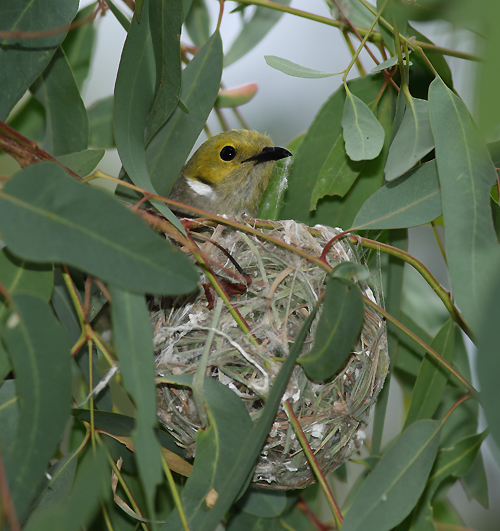
White-plumed honeyeaters are commonly seen in River Red Gum paddock trees. In this photo by Geoff Park, a honeyeater adds cobweb to a delicate cup nest in a eucalypt sapling.
Donations are always welcome, and feel free to bring a plate of nibbles to share.
When: Sunday 9 September from 9:30 am – 2:30 pm
Where: 49 Hayes Rd, Baringhup VIC
This is a free event. We will serve a light lunch of soup and rolls.
What to bring:
*Shoes and clothing appropriate for walking outside in the bush.
*Binoculars if you have them (we’ll also provide some).
RSVP: Bookings and enquiries to Tanya Loos tanya@connectingcountry.org.au or call our office on 5472 1594
Yandoit bird outing – some fine birds
Posted on 13 August, 2018 by Tanya Loos
Landholder John Carruthers recently requested a visit from some experienced birdos to conduct some benchmark bird surveys on his property off Limestone Rd, Yandoit, Victoria. Being a very fine part of the world for birding, this is where we decided to have Connecting Country’s mid-week bird walk.
At 9 am on Wednesday 18 July 2018, our small group met with John at his property. The land is a mix of open country and bush, with Kennedys Gully coursing through open paddocks, and two patches of remnant vegetation with some lovely large old trees. We conducted a 20 minute – 2 ha search, which recorded eight bird species. An area search for the rest of the morning recorded 25 species.
The links to the surveys in Birdata are:
The highlights were a flock of Brown-headed Honeyeaters, a pair of Restless Flycatchers and a pair of Jacky Winters. The Restless Flycatchers and Jacky Winters are birds of open woodlands, so John’s plan to keep some areas open for grazing will be good for these birds.
A lone Yellow-tufted honeyeater was a surprise. Perhaps more of these would be present when the eucalypts are in flower. The Noisy Miners we saw are a concern. Any shrub plantings in the remnants will help discourage these bushland bullies.
While we did not see Brown Treecreepers on the survey, they have been observed at the property previously. The requirements for Brown Treecreepers include lots and lots of fallen timber, so leaving habitat woody debris on the ground will take care of them.
The presence of large old trees on the property, and the extensive native vegetation along Limestone Rd, meant the bird survey recorded a mix of open country and very valuable, threatened Box-Ironbark birds. As a baseline survey, John is starting with the bar set high!
If you already have woodland birds on your property, your restoration plan might include a goal to retain these birds, and provide them with even better habitat by planting shrubs for nesting and food resources.
Thank you, John for showing us your beautiful property, and for your very generous donation to Connecting Country.
Habitat Health Check – our new project!
Posted on 7 August, 2018 by Tanya Loos
In 2009, Connecting Country created a Biodiversity Blueprint with the help of the community and our partners. From the outset, scientific monitoring has been a high priority at Connecting Country. Without monitoring, we don’t know if we’re achieving our goal to restore habitat for native species.
Monitoring achievements
We’ve been fortunate to have a world-class landscape ecologist, Professor Andrew Bennett, assist in creating our monitoring programs for woodland birds and Brush-tailed phascogales. As of 2018 we’ve collected 23,996 individual bird records, and 1,424 records for our phascogale monitoring.
Our wonderful ‘Connecting Landscapes’ project (2013- 2017) worked with local landholders to help restore over 1,600 hectares of land. It also funded staff to establish and run our bird and nest box monitoring programs. These days, funding is more likely to be smaller amounts of money over shorter time scales. In-house monitoring by staff has become a luxury!
In the meantime, we’ve developed a team of highly-skilled and enthusiastic volunteers ready to take a more active role as ‘citizen scientists’. We’re poised to update to a new model that is more community-driven – drawing upon the power of YOU, the community, to contribute data as volunteer citizen scientists.
This change has been in the air for a while. After the success of our ‘Stewards for Woodland Birds’ project, we’re delighted to announce we have funding from the Helen Macpherson Smith Trust to support this important transition.
The new project is ‘Habitat Health Check: empowering citizen scientists to monitor habitat health in Central Victoria.’

Male Hooded Robin. Analysis of our results shows a welcome increase of this species in the Mount Alexander region. Photo by Geoff Park.
Habitat Health Check – analysing and acting on our scientific monitoring
Habitat Health Check is a collaborative, robust, citizen science project that monitors native animals and plants in the Mount Alexander region. We will review our existing, long-term monitoring programs, and move to a new collaborative, targeted model that empowers our enthusiastic and skilled volunteers, improves scientific rigour, and promotes data sharing via the Visualising Victoria’s Biodiversity online portal.
Tanya Loos, Connecting Country’s monitoring and engagement coordinator, will deliver the project between now and 2020. Habitat Health Check will encompass BirdWatch, NestboxWatch, FrogandReptileWatch and PlantWatch.
Some expected highlights
Our scientific data will be analysed by experts from BirdLife Australia and Latrobe University, and the results shared in an exciting evening forum.
Four workshops will review our data and results, and invite the community to explore new scientific questions and methods. How can we best work with the new BirdLife Castlemaine District group? What have we learned in the past eight years? And where to from here?
We’ll collaborate closely with SWIFFT – the State-wide Integrated Flora and Fauna Teams, to share our findings and use this great online resource.
In 2019, we’ll run a competition for the best local photographs of our favourite flora and fauna, for Connecting Country’s very first calendar!
Get ready to get involved
We will be recruiting team leaders to inform and guide our various citizen science programs – so birders, nestbox enthusiasts, plant nuts, reptile watchers and froggers: watch this space!
Small bush bird habitat created at Bradford!
Posted on 30 July, 2018 by Tanya Loos
What a difference a couple of years makes! Last Thursday, 26 July 2018, Bonnie, Frances and Tanya had the great pleasure of visiting Kerri Peacoulakis’ property in Bradford to marvel at the growth of native plant species at their direct seeding site, and also chat about bird surveying. Below is a photo of part of the site taken in September 2016, about one year after direct seeding.
Below is the same site, taken in the same direction. Note the large eucalypt with the wide crown in the left hand side of the photo.
The site was direct seeded in 2015, as part of Connecting Country’s Habitat for Bush Birds project. It is amazing to think that there are many tiny young plants fighting for survival under all the prolific capeweed in the first photo! The site is a bird survey site called NW-PR-03, a northwest paddock revegetation site. The direct seeding is even more successful looking in the other direction, towards the Blue Hills area.
In the above photo, Bonnie is using a trundle wheel and a counter to carry out a direct seeding success count. These counts measure how many plants have grown, giving a standard measure of trees/shrubs per metre count. This number is comparable from site to site, and enables us here at Connecting Country to monitor the growth of our direct seeding from year to year.
The plant species in the direct seeding included a mix of local wattles, eucalypts, she-oaks, hop bush, and hakeas.
Kerri is taking on the bird survey site, by surveying the site four times per year. During our visit, we conducted a 20 minute 2 hectare count, with Kerri entering the data on her Birdata app on her smartphone. So simple! During the survey, we saw many open country species such as Red-rumped parrots, Welcome swallows and Australian magpies. Kerri said that she had observed Superb fairy-wrens on the site – a true mark of success as these little birds are NEVER recorded in a bare, open paddock! Well done Kerri and also her partner Tusker and family for a fantastic project!
It’s planting season! Understorey enhancement underway…
Posted on 17 July, 2018 by Tanya Loos
It is the height of winter, and the peak planting season is drawing to a close. We’re very happy to be distributing plants to landholders participating in our on-ground works projects. The plants pictured below are a range of native understorey plants that will add diversity and habitat quality to existing remnant vegetation.
Landholders involved in our ‘Prickly Plants for Wildlife’ project are planting their own plants. Landholders from our ‘Woodland Bird Habitat’, ‘Remnant Rescue’ or ‘Biodiversity On-ground Action’ projects are receiving assistance from the Dja Dja Wurrung works crew, known as Djandak. These projects are made possible by funding from the Victorian Department of Environment, Land, Water and Planning, and the North Central Catchment Management Authority.
Young plants need protection while they get established. Previously we used milk carton guards and bamboo stakes in our planting programs. Now we use coreflute guards and hardwood stakes, as these provide more protection against grazing wallabies, and are less likely to get knocked over by commuting kangaroos.

The Little Habitat Heroes planting site on Mount Alexander, by the old silkworm farm. Coreflute guards and stakes have worked very well on this site, resulting in high rates of plant survival.
Connecting Country is always looking for landholders interested in protecting native vegetation and wildlife habitat on their properties. Check out the on-ground works section of our website for more information, and to download an Expression of Interest form.
Come and hear about Scientific monitoring at Connecting Country: a community effort – Friday 13 July 2018
Posted on 12 July, 2018 by Tanya Loos
Castlemaine Field Naturalists Club is hosting a guest speaker, our very own Tanya Loos, talking about Scientific monitoring at Connecting Country: a community effort.
Woodland birds, arboreal mammals, frogs and reptiles – what can these critters tell us about landscape health? Tanya Loos, Connecting Country’s Monitoring and Engagement Coordinator, talks about the organisation’s long term monitoring programs – how and why they were created, and what we have found so far. There will be a special emphasis on the contribution volunteers have made to the program’s success.
Tanya has worked with Connecting Country for four years, and whilst mainly a birdo, is also a field naturalist and science writer. She lives on a bush block in Porcupine Ridge with her husband, dog and a number of rescue budgies and cockatiels.
The evening event will be from 7.30 pm on Friday 13 July 2018 in the Fellowship Room (behind the Uniting Church on Lyttleton St, Castlemaine VIC, next door to the Castlemaine Art Museum). There is no cost for entry, and both members and visitors of all ages are welcome and encouraged to attend. We look forward to seeing you there.
The talk will be followed by an field excursion at 1.30 pm on Saturday 14 July 2018.
The excursion will be to Cullen Gunn’s property in Otterys Scrub Rd, Walmer. Cullen’s property is a former grazing property with many large old trees, and an extensive revegetation program involving three separate projects with Connecting Country. We will be able to see direct seeding revegetation in various stages of regrowth. The site has a long term bird survey site, and has recently been colonised by a population of Brush-tailed Phascogales, a sure measure of success!
Depart at 1.30 pm from the car park opposite the Castle Motel on Duke St, Castlemaine (next to the Octopus building). Bring afternoon tea, raincoat and suitable footwear.
BirdLife Castlemaine District launch and Swift Parrot conservation
Posted on 10 July, 2018 by Tanya Loos
Many excited faces gathered at the Castlemaine Botanic Gardens Tearooms on Saturday 7 July 2018, as we celebrated the launch of BirdLife Australia’s newest branch – BirdLife Castlemaine and District. The launch also incorporated an ‘Act for Birds’ Roadshow – a community forum on how we can encourage stronger environmental laws to help safeguard threatened species such as the Swift Parrot.
We began the afternoon with a Welcome to Country from Uncle Rick and Kane, and Uncle Rick talked about the significance of birds to the Dja Dja Wurrung. Fiona Blandford (Branch Network manager) and Jane Rusden (BirdLife District Convenor) formally launched the new branch, with a lovely nod to Connecting Country and our work to build community interest in birds on our region.
Brendan Sydes (Connecting Country president), in his role as lawyer and CEO of Environmental Justice Australia, gave a rousing introduction to the potential for positive change to environmental laws in this country.
Beth Mellick (of Wettenhall Environment Trust) is the regional coordinator for the local Swift Parrot counts done twice a year. Beth gave a wonderful talk on our local swifties and the power of citizen scientists, including showing an excerpt from Debbie Worland’s DVD, the Swift Parrots of Muckleford in Central Victoria. The DVD shows never-seen footage of Swift Parrots filmed entirely in Muckleford over a five-year period by Debbie Worland, a member of the Castlemaine Field Naturalists Club. For infomation about the DVD, email swiftparrotsofmuckleford@hotmail.com. If you would like to be involved in the Swift Parrot count later this year, email Beth at beth@wettenhall.org.au.
We then heard from our main speaker – Kim Garrett (Conservation Community Organiser for BirdLife Australia). Kim spoke passionately and eloquently on how our current laws are failing threatened species in Australia, and what we as community members can do about it. Many policy and environmental law experts have prepared a detailed case for how environmental laws could be strengthened in our country, and the Act for Birds campaign summarises the case succinctly.
In a nutshell, the campaign calls for us to:
- Create national environment laws that genuinely protect our unique birdlife.
- Establish independent institutions that set national environmental standards, and operate transparently and independently of government.
- Guarantee community rights and participation in environmental decision-making.
To get involved, head on over to www.actforbirds.org to sign the petition and get some tips on engaging with your local member.
The Swift Parrot is Critically Endangered and numbers are still declining due to serious loopholes in current environmental laws. The current laws are up for a twenty year review, so now is an ideal time to act.
Please enjoy this gallery of photos of some of the attendees. Many thanks to the staff from BirdLife for travelling to Castlemaine to share in the excitement, to the committee and volunteers of BirdLife District Castlemaine for planning and logistics, Uncle Rick and Kane, the presenters, and to Jane Rusden for pulling the whole event together!
The contact email for the new branch is castlemaine@birdlife.org.au and our new Facebook page is BirdLife-Castlemaine-District
For a great overview of the Swift Parrot and the ‘Act for Birds’ campaign, see this article in the Bendigo Advertisor: renewed-focus-to-save-castlemaines-migratory-parrots/
Powerful Owl Chat – Thursday 28 June 2018
Posted on 19 June, 2018 by Tanya Loos
Come along and share stories about Powerful Owls at a ‘Powerful Owl Chat’ in Maldon.
Garry Cheers will tell us about Powerful Owl food, habitat, breeding, behaviour and giving owls space during breeding season. Geoff Park will show owl images and talk about what you can do to connect with your local environment.
Bring along your photos and owl knowledge to share. There will be plenty of opportunity to ask questions and share observations. All welcome.
Thursday 28 June 2018 from 7.00 – 8.30 pm
Maldon Neighbourhood Centre (1 Church St, Maldon VIC)
For inquiries please contact Forest Keegel on 0402 035 521 or forestkeegel@gmail.com
Makarrata Garden Tarrangower MaGaTa is happening on Dja Dja Wurrung Country in Maldon. It’s a a community engaged sculpture project to research habitat of Powerful Owl and Duan (Brush Tailed Phascogale), and educate ourselves about the history of Dja Dja Wurrung people and celebrate their living Culture.
CC Membership Renewal for 2018-19 – now available online
Posted on 19 June, 2018 by Tanya Loos
Connecting Country’s membership renewal drive for the 2018-19 has commenced, and we are happy to announce that it is simpler than ever. By following this secure link (CLICK HERE) or by following the secure links from our home page, you can now renew your membership online in a couple of minutes.
Connecting Country membership is free and has lots of benefits. Being a member:
- Demonstrates your support for our activities, and our work towards an increasingly healthy natural environment within the Mount Alexander Region. The support of good membership numbers is critical when we apply for grants and other external support.
- Provides insurance cover when you attend our events.
- Allows you to vote at our Annual General Meeting – planned for October 2018.
- Provides free access to our events and resources, including borrowing monitoring equipment.
Please encourage friends and contracts who are interested in the local environment to consider becoming a member. For people applying to become members for the first time, please use the same form. New applications will then be presented at the next monthly Committee of Management meeting before your membership is formalised.
If you would prefer a hard copy membership form instead, please contact us (info@connectingcountry.org.au) to request an emailed PDF or a posted form.
Fungi presentation and excursion with John Walter – Friday 8 June 2018
Posted on 6 June, 2018 by Tanya Loos
The guest speaker for the June general meeting of the Castlemaine Field Naturalists Club is Drummond-based naturalist, John Walter. His presentation is about FUNGI: the rare and the where and how you can make a difference.
John writes:
‘I have an extensive library and will bring some of my collection of fungi books with me for members to examine. I would also like to demonstrate some of the web-based resources available for people to use. FungiMap has a focus on some rare or rarely seen species and I have been fortunate enough to make some very interesting fungal finds so they will form a key part of the presentation and I will also show some of the incredible fungal diversity to be seen in our region.’
John’s presentation is on Friday 8 June from 7.30 pm in the Fellowship Room on Lyttleton St, Castlemaine VIC (behind the Uniting Church, next door to the Castlemaine Art Museum). There is no cost for entry, and both members and visitors of all ages are welcome and encouraged to attend.
John will also kindly lead the excursion the following day, to search for fungi in the field. The destination is likely to be at Blackwood, but this is to be confirmed at the meeting on Friday evening.
The excursion will depart on Saturday 9 June at 1.30 pm sharp from the Octopus U3A building on Duke St, Castlemaine (opposite the Castle Motel). Car pooling will be available, and please bring along some afternoon tea. Again, visitors and members all welcome and encouraged.
For further information please contact Castlemaine Field Naturalists Club.
Nest box workshop # 2 – Sunday 17 June 2018
Posted on 6 June, 2018 by Tanya Loos
If you already own nest boxes, or want to set some up on your property, come along to a workshop with nestbox builder and naturalist Miles Geldard. Our nest box workshop in May was extremely popular, so we are holding another similar event, but at a different location.
This workshop will be held at a beautiful Trust for Nature property at Sedgwick, north of Castlemaine. Miles Geldard will shares his extensive knowledge on the design, construction, installation and monitoring of nest boxes for wildlife. Landholder Tamsin Byrne, and Connecting Country’s Tanya Loos, will also talk briefly about habitat restoration and local birdlife. The event includes a light lunch, indoor presentation and nestbox check using a special camera.
Sunday 17 June 2018 from 10:30 am to 3:00 pm
Please RSVP, including any dietary requirements, by Wednesday 13 June to Tanya Loos by email (tanya@connectingcountry.org.au) or phone (03 5472 1594).
Attendance is free. We also have a very special door prize for a lucky attendee!
A map to the workshop location will be provided when you book.
As this is a partly outdoor event, please dress warmly, and wear shoes and clothing appropriate for walking in the bush. In the event of severe weather we will hold the workshop inside.
Joint Management Plan for the Dja Dja Wurrung Parks: provide feedback
Posted on 30 May, 2018 by Tanya Loos
Community groups and individuals are invited to take part in community consultation regarding a joint management plan for six parks in Central Victoria.
From the Parks Victoria website:
Parks Victoria has a vision to manage all parks in their surrounding landscapes, in partnership with Traditional Owners, and other government and non-government organisations and community groups. Parks Victoria is currently supporting the Dhelkunya Dja Land Management Board to involve the community in developing a plan for the joint management of the six Dja Dja Wurrung Parks held by the Dja Dja Wurrung People as Aboriginal Title.
The Draft Joint Management Plan for the Dja Dja Wurrung Parks covers the following parks:
- Greater Bendigo National Park
- Hepburn Regional Park
- Paddys Ranges State Park
- Kara Kara National Park
- Kooyoora State Park
- Wehla Nature Conservation Reserve

Dja Dja Wurrung Traditional Owners meeting on Country in 2017 to participate in the planning for the Dja Dja Wurrung Parks
It is expected that this joint planning process will extend to other parks within the Mount Alexander Shire in the future.
To read the plan, make a submission, or access an online survey about the plan, click here: Dhelkunya Dja Land Management Board
All submissions must be made by 19 June 2018.
Painted Button-quails in the garden
Posted on 29 May, 2018 by Tanya Loos
Connecting Country staff member Bonnie Humphreys has seen small, quail-like birds wandering around her garden for weeks, even on her doorstep. Until now, they’ve escaped Bonnie’s efforts to capture a photo and confirm identification as Painted Button-quail! The two birds seen here were resting quietly together.
Button-quails are a truly Australian group of birds. Although they look a lot like quails, DNA analysis suggests that button-quails are quite distant from all living groups of birds. Their behaviour is certainly very unusual!
Unlike most birds, it’s the brightly coloured female who calls, and attracts a male. They are polyandrous, with one female mating with several males in an area. After mating, the female builds a domed nest near the ground in a shrub or grass tussock, and lays three or four small white eggs. The male then incubates the young until hatching. Once hatched, the tiny little chicks fledge right away and the male feeds them for the next ten days or so. After this, the young button-quails can fend for themselves.
The birds pictured above could be either males, or immature birds. In females, the reddish patch is brighter. However, the depth of the colour red is quite variable according to light conditions and the position of the bird. Hence it’s quite tricky to identify the sex of the bird. (Happy to hear local birder expert opinion on this one!)
Bonnie’s visiting button-quails are a group of three birds, and the Handbook of Australian and New Zealand birds says they are most often seen in small family groups. At this time of year, breeding has finished, so maybe they are just being companionable and foraging together until the female starts her ‘booming’call.
Their foraging technique is also most unusual. Painted button-quails often feed in pairs, in grasses and leaf litter on the ground. They scratch and glean, spinning on alternate legs to create distinctive circular depressions, known as platelets. Platelets are often the only visible sign that the bird is present. The photo below shows the typical look of platelets in bushland with plenty of leaf litter.
There’s been extensive feeding activity in leaf litter and lawn areas at Bonnie’s place. It was hard to capture on camera the sheer extent of the ground being worked over by these enthusiastic little birds.
Painted button-quails are a member of the threatened Victorian Temperate Woodland bird Community. They are notoriously difficult to capture during typical (20 minute, 2 ha) bird surveys, so we welcome any sightings and observations. You can download a sightings sheet here, and let us know where and when you’ve seen button-quails, or their platelets.![]()
In 2011, Echidna Walkabout Tours captured this amazing footage of a Painted Button-quail foraging in leaf litter in urban Port Melbourne! Do watch the whole video because at the end the female puffs herself up like a frog and starts calling her booming call. The low frequency call is difficult to hear on the video, but you can see the amazing behaviour!
Come frogging for World Environment Day – 5 June 2018
Posted on 23 May, 2018 by Tanya Loos
Celebrate World Environment Day 2018 with local ecologist Karl Just and Connecting Country on a special evening ‘frogging’ workshop.
Karl Just will share his extensive knowledge of our local frogs, and help participants learn how to identify frogs by their calls, and by sight. The evening will also cover how we can look after frogs and their habitat. The workshop is free, and includes hot drinks and snacks and a frog identification guide.
When: Tuesday 5 June 2018 from 4:30 to 7:30 pm
Where: Meet out the front of Newstead Community Centre (9 Lyons St, Newstead VIC) and carpool to a private property in Strangways
What to bring: Sturdy shoes, long pants, warm and weather-appropriate clothes, torch (as it will be dark around 5:30 pm)
The workshop will be strictly limited to fifteen participants so make sure you book!
RSVP: to Asha by Monday 4 June to asha@connectingcountry.org.au
Enquiries: (03) 5472 1594
















